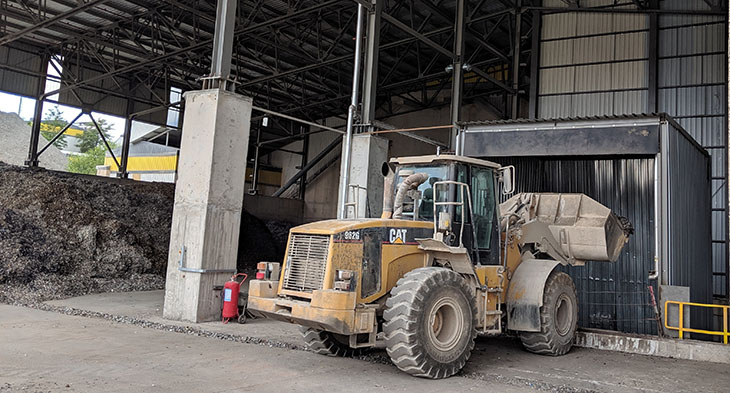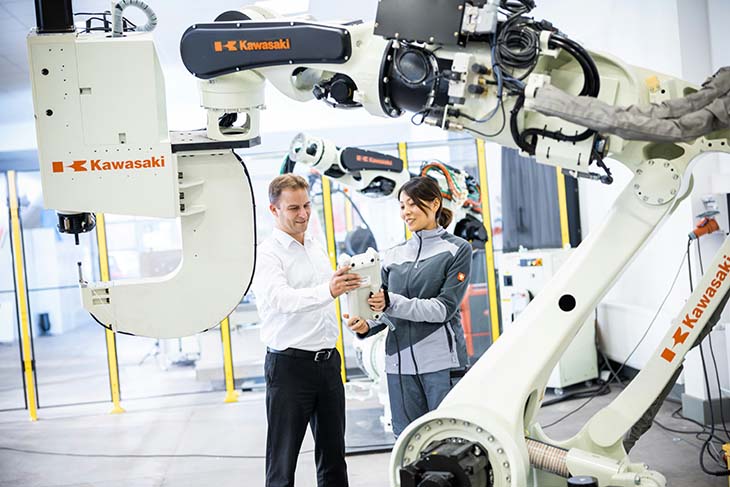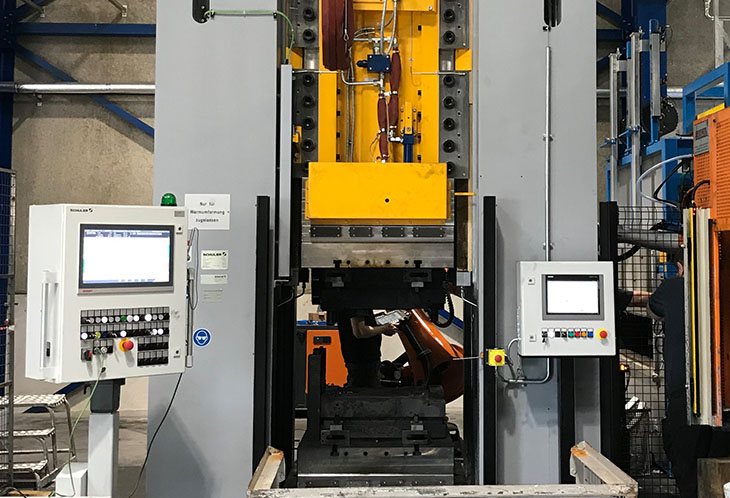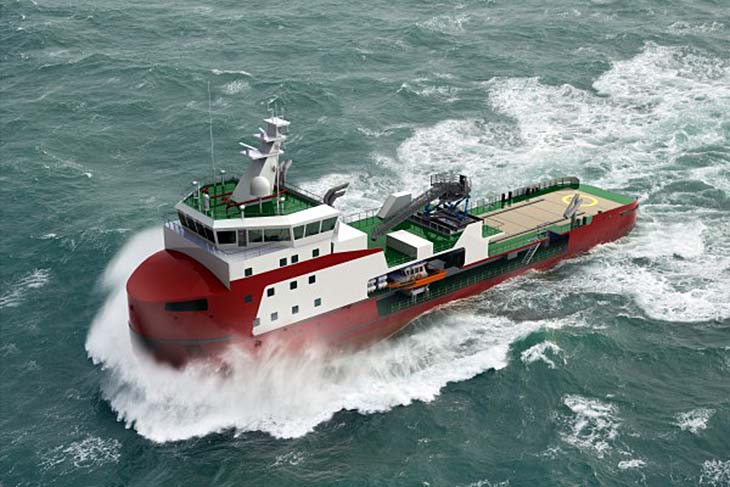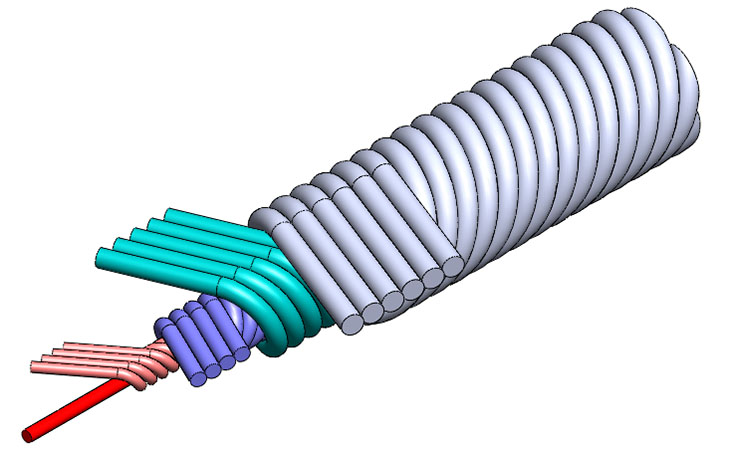Replacing a large proportion of expensive primary fuels with secondary fuels to reduce the costs involved in the energy-intensive production of cement – that is the goal of manufacturer Votorantim Cimentos. To achieve this, the Turkish company based at Hasanoğlan relies on a mixture of refuse derived fuel (RDF) and shredded used tyres (tire derived fuel, TDF). Vecoplan AG has developed a complete system well thought out right to the last detail. It receives, conveys and stores the various materials, reliably feeding the preheater.
“Today, alternative fuels are a prerequisite for economical cement production, because they replace expensive fossil fuels like coal and oil,” explains Tim Hamer, Sales Manager for Waste at Vecoplan. One of his customers is the Turkish cement manufacturer Votorantim Cimentos. The company is a member of the Votorantim Group, a Brazilian industrial concern, which is among the eight largest cement manufacturers worldwide, with more than 780,000 employees. In Turkey, Votorantim Cimentos has sites in Yozgat, Çorum, Sivas and Hasanoğlan near Ankara – and it is on the Hasanoğlan site that the company uses a mix of refuse derived fuels to continuously feed the preheater. “Votorantim Cimentos uses a mix of RDF and TDF,” says Hamer. The rubber of old car and truck tyres is shredded into pieces of up to 70 millimetres after the tyre rims have been removed. The calorific value of TDF is comparable to that of hard coal.
In order to be able to receive, store and convey the various materials after delivery and to feed them in dosed quantities to the preheater, the manufacturer turned to Vecoplan AG. Based in Bad Marienberg, Germany, Vecoplan develops and manufactures machines and plants for processing and handling alternative fuels derived from plastics, paper and domestic & commercial waste. However, the machine manufacturing company does not only deliver, it also advises customers and plans the plants – and it always finds the right solution in the end. “We offer integrated project management as well as installation, commissioning and a comprehensive service, so customers receive everything from a single source,” says Vecoplan’s Head of Sales. He was responsible for the Votorantim Cimentos project. Vecoplan supplies proven and robust components for handling refuse derived fuels in the cement industry, such as pipe belt and drag chain conveyors, truck unloading stations and storage systems. This convinced the people in charge at Votorantim Cimentos – they also held Vecoplan’s extensive engineering and project experience in high regard.
High demands on handling
External suppliers deliver refuse derived fuels to the gates of the plant in Hasanoğlan. The plant operators placed high demands on the further handling of the material, in terms of throughput, availability, energy efficiency and output quality. They needed a line that would receive the materials for the preheater from the trucks, store them and convey them – dust-free – over a total distance of around 280 metres. The two types of fuel were to be collected separately, mixed differently for different qualities and stored in this way. “The mixtures have an RDF proportion with a density of about 0.2, while the TDF proportion density is between 0.35 and 0.6 metric tons per cubic metre,” says Tim Hamer. “We had to implement the continuous feeding of the preheater with the homogeneous fuel mixtures.” The engineers designed the plants for an average conveying capacity of 30 tons per hour from the mix of RDF and TDF. The conveyor line to the preheater had already been designed for 40 tons per hour. This corresponds to a possible annual capacity of about 288,000 tons.
Since the machines had to be in operation 24/7 on at least 300 days a year, availability was particularly important. Other important factors were low maintenance requirements and reliable service. “This assignment was a brownfield project, so we had to integrate the new machines into the existing production environment and make the best possible use of the limited space available,” says Hamer, describing the challenge.
Detailed planning, reliable components
Vecoplan initially designed the entire plant using a detailed engineering plan and addressing the material flows of the refuse derived fuels within the production line in detail.
Dumper trucks and walking-floor trucks deliver the RDF & TDF. There are separate and coordinated receiving points for both the RDF and the TDF, and employees can also load the materials using wheel loaders. In the RDF receiving area, the truck pours the material into a reception station with a capacity of about 100 cubic metres. After levelling, a drag chain conveyor transports the material from there to a drum magnet, which reliably extracts ferrous impurities from the mass.
The RDF passes through a disc screen, which separates particles larger than 70 millimetres from the mass. This ensures clean combustion and prevents blockages caused by pieces of excess length. A frequency-controlled double screw conveys the RDF evenly onto a belt weigher, which sends a precise report of the current material flow to the operator, who can then control the desired mixing ratio between RDF and TDF in real time.
Workers use a wheel loader to pour the TDF material into a receiving bunker. “We designed this storage solution in such a way that it can be flexibly adapted in length and width to the required mass of input material,” says Tim Hamer. “We chose a storage volume of approximately 60 cubic metres for the project.” The functional principle of the bunker is based on push rod technology – also known as the “walking floor” principle: The push rod discharger consists of slats, which a hydraulic drive moves one by one under the material to be transported. The slats then move forwards and backwards together until the material is in the desired position. An equalizing roller homogenizes the hopper system discharge, which then travels to a downstream drag chain conveyor. The TDF material is now measured with a belt weigher and regulated according to the desired mixing ratio.
Loss and emission-free all the way to the preheater
The RDF/TDF fuel mixture must now be conveyed to the preheater. “We supplied a VecoBelt series pipe belt conveyor for this transport task,” says Tim Hamer. Thanks to its enclosed design, the system protects the material from environmental influences, ensuring that it is conveyed to the preheater safely – with neither losses nor emissions. This plant bridges a total distance of almost 280 metres. Vecoplan supplied the VecoBelt in two section lengths for the project. The fully enclosed conveyor can handle inclines of up to 18 degrees, so it is ideal for feeding the material to the preheater. “Even in the feeder section, the conveyor belt in the VRF series passes through a pipe – it doesn’t run on maintenance-intensive rollers like conventional conveyor belt systems,” says Hamer. The sliding belt is supported by an air cushion in both the feed and the return. This means that only minor frictional losses occur during operation, resulting in cost-efficient transport with significant energy savings. The VecoBelt can convey up to 1,200 cubic metres per hour, depending on the size of belt selected.
Each drive station is equipped with two scrapers. Front head and carbide scrapers can be adjusted from the outside. The front head scraper is flexible, yet strong enough to remove impurities from the belt. The carbide scraper provides even more thorough cleaning and also removes firmly adhering belt dirt.
“To check the quality of the fuel, we installed a sample station at the transition point between the two VecoBelt conveyor systems,” says Hamer. “This enables our customer to take material samples for chemical analysis and for determining the fuel quality.” The second section of the VecoBelt conveyor system brings the material safely and reliably to the preheater tower and transfers it to the feed hopper of the gravimetric dosing system. This enables constant and uniform feeding and a high substitution rate. Two high-temperature rams prevent burnback. One ram is mounted in front of the dosing system, the other behind it.
High throughput, economical in operation
For this project, Vecoplan delivered a balanced, complete handling line with coordinated components to Votorantim Cimentos – and the entire plant works reliably, with minimum maintenance. The operator now has an extremely economical system with a high throughput. The robust solutions have a high level of availability and flexibility with regard to the different materials. “This means we can ensure the continuous supply of the preheater with high-quality fuel mixtures in various qualities at all times,” says a satisfied Tim Hamer.









